Foreign News
India recalls top Canada envoy as row over Nijjar killing deepens

India says it is withdrawing its top envoy to Ottawa and other diplomats because the Canadian government is investigating them as “persons of interest” in an investigation, reigniting a diplomatic row over the killing of a Sikh separatist leader last year.
India – Canada relations have been tense since September 2023 when Prime Minister Justin Trudeau said Canada had credible evidence to link Indian agents to the assassination of Hardeep Singh Nijjar on Canadian soil earlier that year.
Nijjar supported a Sikh homeland in the form of an independent Khalistani State and was designated by India as a “terrorist” in July 2020.
India has repeatedly denied the allegation that its agents killed him, challenging Canada to share evidence to back its claim.
On Monday, the Indian Ministry of External Affairs said it had summoned the Canadian charge d’affaires to denounce the “completely unacceptable” and “baseless targeting” of the Indian high commissioner and other diplomats and officials.
“We have no faith in the current Canadian Government’s commitment to ensure their security. Therefore, the Government of India has decided to withdraw the High Commissioner and other targeted diplomats and officials,” it said in a statement.
In its earlier statement, the ministry said India “strongly rejects these preposterous imputations and ascribes them to the political agenda of the Trudeau Government” and reiterated Canada has not provided any proof “despite many requests from our side”.
“This latest step follows interactions that have again witnessed assertions without any facts. This leaves little doubt that on the pretext of an investigation, there is a deliberate strategy of smearing India for political gains,” the statement added.
India now reserves the right to take further steps in response to these latest efforts of the Canadian Government to concoct allegations against Indian diplomats,” said the statement.
The Indian government also alleged the Trudeau government “has consciously provided space to violent extremists and terrorists to harass, threaten and intimidate Indian diplomats and community leaders in Canada”.
Canada pulled out more than 40 diplomats from India in October 2023 after New Delhi asked Ottawa to reduce its diplomatic presence.
In June this year a committee of Canadian parlimentrians named Indial and China as the main foreign threats to its democratic institutions, based on input from intelligence agencies.
India’s envoy in Ottawa, Sanjay Kumar Verma, called the report politically motivated and influenced by Sikh separatist campaigners.
The assassination plots against Sikh separatist leaders in Canada and the US have tested their relationship with India, as the Western nations hope to forge deeper ties with New Delhi to counter China’s rising global influence.
(Aljazeera)
Foreign News
Nigeria fuel tanker explosion kills at least 94, injures dozens
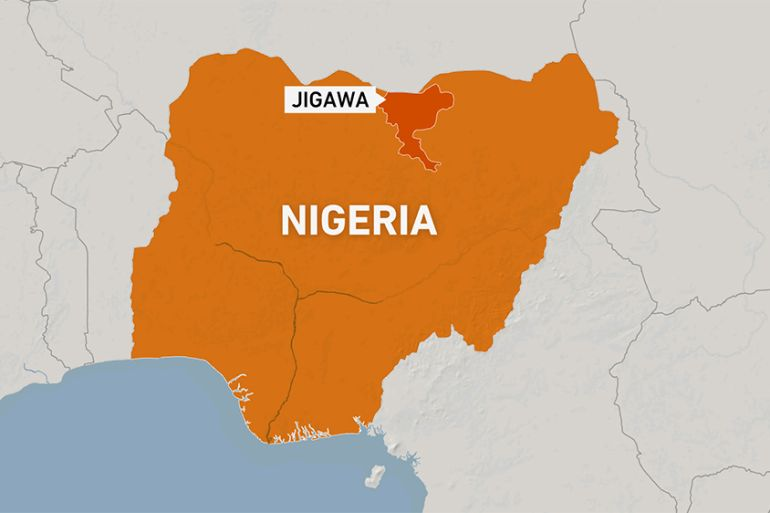
At least 94 people have been killed and about 50 others wounded after an overturned fuel tanker exploded in northwestern Nigeria, according to police.
The overnight explosion took place on an expressway in Jigawa State as people rushed to the vehicle to collect the fuel, a police spokesman said on Wednesday.
“We have so far confirmed 94 people dead,” Lawan Shiisu Adam said, warning the death toll could rise.
The tanker had veered to avoid colliding with a truck in the town of Majia, the spokesman said.
Following the crash, residents crowded around the vehicle, which likely increased the number of casualties, he added.
“The residents were scooping up fuel from the overturned tanker when the explosion occurred, sparking a massive inferno that killed 94 people on the spot,” Adam told The Associated Press news agency.
Videos that appeared to be from the scene showed a massive fire stretching across the entire area, with what appeared to be bodies littered at the scene.
The fire burned into the early hours of Wednesday.
The wounded were taken to local hospitals in Ringim and Hadejia towns where they were being treated, Adam said.
Deadly truck accidents are common along most of the main roads in Nigeria, with experts attributing many of them to reckless driving, poor road conditions and ill-maintained vehicles.
Last month, at least 48 people were killed in an explosion after a fuel tanker collided with another truck in Nigeria’s north-central Niger State.
In 2020 alone, there were 1,531 petrol tanker crashes resulting in 535 deaths and injuries to 1,142 people, according to Nigeria’s Federal Road Safety Corps.
Tanker explosions can result in mass casualties as residents often look to siphon off fuel following accidents. Fuel has also become an even more precious commodity as Nigeria suffers its worst economic crisis in a generation.
The Nigerian National Petroleum Company in early September increased the price of petrol by at least 39 percent, the second steep hike in more than a year.
[Aljazeera]
Foreign News
Kenyan deputy president’s impeachment trial begins
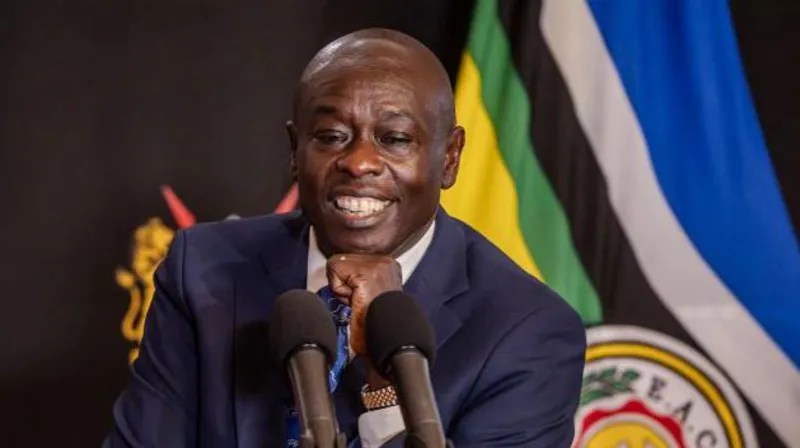
Kenya’s parliament has begun the final step to remove Deputy President Rigathi Gachagua from office.
An overwhelming majority voted in the National Assembly last week to approve his impeachment, setting the stage for the two-day trial in the Senate that decides whether or not to oust him.
The deputy president faces 11 charges including corruption, inciting ethnic divisions and undermining government – all of which he denies.
The row follows his recent fallout with President William Ruto, who has remained silent about the matter.
Gachagua’s trial is being conducted before the full house of the Senate after it abandoned a process to set up an 11-member committee to investigate the charges.
The deputy president stood before the chamber for the charges to be read out to him as proceedings got under way – pleading not guilty to each one.
Analysts expect the deputy president’s impeachment to be upheld as the ruling party senators are likely to be backed by those from the main opposition as happened when the the lower house voted on the case.
Later on Wednesday, evidence by the National Assembly against Gachagua, including any witnesses, will be introduced and examined for three hours followed by another two hours of cross-examination.
On Thursday, the trial will resume to deal with the evidence and witnesses from Gachagua’s side until late afternoon.
At the conclusion of the process in the evening, senators will debate the motion for about two hours and then take a vote – scheduled to happen on Thursday night from 20:30 local time.
The Senate can decide to extend the process to Friday, the last day it can legally extend the matter.
At least two-thirds of the 67 Senate members must approve the motion for Gachagua to be removed from office.
Should that happen and his impeachment stands, he would be barred from ever holding public office. He is expected to challenge the impeachment in the courts if it passes.
The deputy president has made numerous unsuccessful attempts to stop the impeachment process, with at least 26 court cases having been filed so far.
On Tuesday, a judge ruled that the court would not interfere and said the Senate should proceed with its constitutional mandate.
And just before the process began on Wednesday, a three-judge bench also declined a similar request.
Some of the grounds for Gachagua’s impeachment include accusations that he acquired assets worth 5.2bn Kenyan shillings ($40m; £31m) in the two years since he became deputy president – allegedly acquired through corrupt means.
He has explained, including during his trial at the National Assembly, that most of the properties in question were from his late brother’s estate.
The deputy president is a wealthy businessman from the vote-rich central Mount Kenya region.
In just five years, he rose from being a first-time MP to become the number two in Kenya’s leadership, after Ruto picked him as his running mate in the August 2022 election.
At the time, he was battling corruption allegations in court which were later dropped after he became the deputy president.
His impeachment trial has dominated the discussions of many Kenyans and the media in recent weeks. Some see the high political drama that the matter has elicited as a distraction from the economic concerns of the majority of Kenyans struggling with the high cost of living.
In June disgruntled Kenyans went to the streets in deadly protests that erupted over unpopular tax hikes, and which exposed a deep rift between Ruto and Gachagua.
Gachagua now stands accused of undermining the work of the security agencies in the wake of remarks he made at the time blaming the intelligence agency.
[BBC]
Foreign News
Spacecraft blasts off to hunt alien life on a distant moon
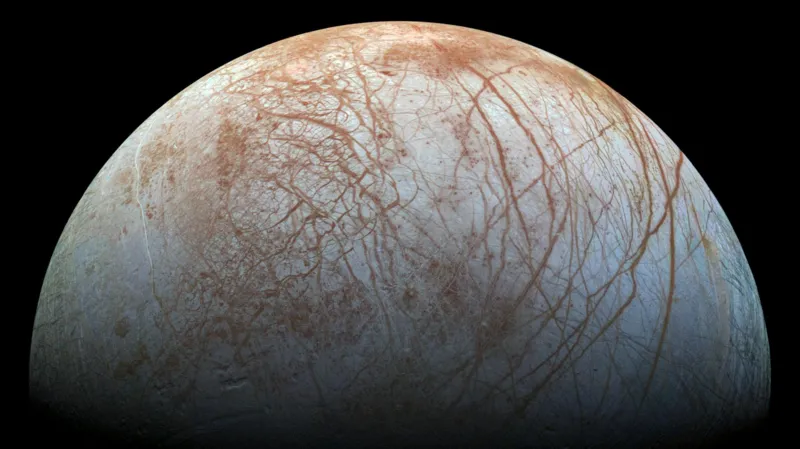
A spacecraft that will hunt for signs of alien life on one of Jupiter’s icy moons has blasted off from Cape Canaveral, Florida.
Nasa launched the spacecraft at 12:06 local time (16:06 GMT) after hurricane Milton forced the mission to postpone plans last week.
Europa Clipper will now travel 1.8 billion miles to reach Europa, a deeply mysterious moon orbiting Jupiter.
It will not arrive until 2030 but what it finds could change what we know about life in our solar system.
Trapped under the moon’s surface could be a vast ocean with double the amount of water on Earth.
The spacecraft is chasing a European mission that left last year, but using a cosmic piggyback, it will overtake and arrive first.
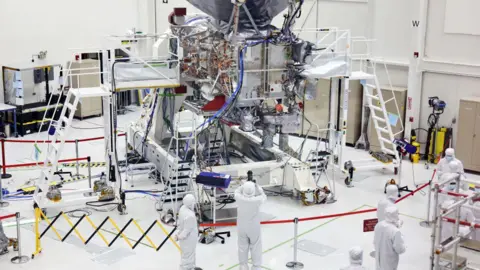
Years in the making, the Europa Clipper launch was delayed at the last minute after hurricane Milton blasted Florida this week.
The spacecraft was rushed indoors for shelter, but after checking the launchpad at Cape Canaveral for damage, engineers gave the go-ahead for lift-off at 12:06 local time (16:06 GMT).
“If we discover life so far away from the Sun, it would imply a separate origin of life to the Earth,” says Mark Fox-Powell, a planetary microbiologist at the Open University. “That is hugely significant, because if that happens twice in our solar system, it could mean life is really common,” he says.
Located 628 million kilometres from Earth, Europa is just a bit bigger than our moon, but that is where the similarity ends.
If it was in our skies, it would shine five times brighter because the water ice would reflect much more sunlight.
Its icy crust is up to 25km thick, and sloshing beneath, there could be a vast saltwater ocean. There may also be chemicals that are the ingredients for simple life.
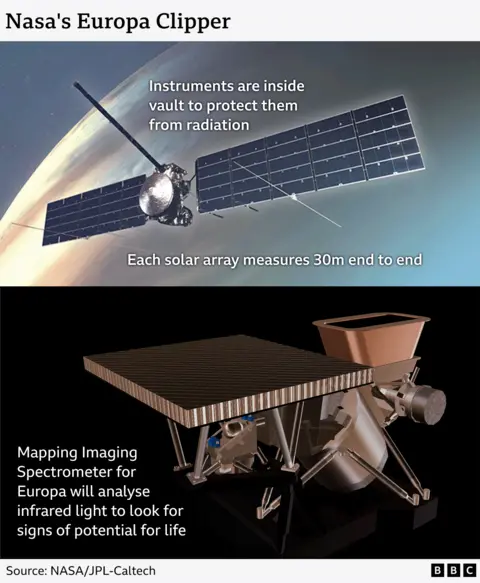
Scientists first realised Europa might support life in the 1970s when, peering through a telescope in Arizona, they saw water ice.
Voyager 1 and 2 spacecrafts captured the first close-up images, and then in 1995 Nasa’s Galileo spacecraft flew past Europa taking some deeply puzzling pictures. They showed a surface riddled with dark, reddish-brown cracks, fractures that may contain salts and sulfur compounds that could support life.
The Hubble space telescope has since taken pictures of what might be plumes of water ejected 100 miles (160 kilometers) above the moon’s surface
But none of those missions got close enough to Europa for long enough to really understand it.
Now scientists hope that instruments on Nasa’s Clipper spacecraft will map almost the entire moon, as well as collect dust particles and fly through the water plumes.
Britney Schmidt, professor of earth and atmospheric sciences at Cornell university in the US, helped to design a laser onboard that will see through the ice.
“I’m most excited about understanding Europa’s plumbing. Where’s the water? Europa has the ice version of Earth’s subduction zones, magma chambers and tectonics – we’re going to try to see into those regions and map them,” she says.
Her instrument, which is called Reason, was tested in Antarctica.
But unlike on Earth, all the instruments on Clipper will be exposed to huge amounts of radiation which Prof Schmidt says is a “major concern.”
The spacecraft should fly past Europa about 50 times, and each time, it will be blasted with radiation equivalent to one million X-rays.
“Much of the electronics are in a vault that’s heavily shielded to keep out radiation,” Prof Schmidt explains.
The spaceship is the largest ever built to visit a planet and has a long journey ahead. Travelling 1.8 billion miles, it will orbit both the Earth and Mars to propel itself further towards Jupiter in what is called the sling-shot effect.

It cannot carry enough fuel to motor itself all the way alone, so it will piggyback off the momentum of Earth and Mars’s gravitational pull.
It will overtake JUICE, the European Space Agency’s spaceship that will also visit Europa on its way to another of Jupiter’s moons called Ganeymede.
Once Clipper approaches Europa in 2030 it will switch on its engines again to carefully manoeuvre itself into the right orbit.
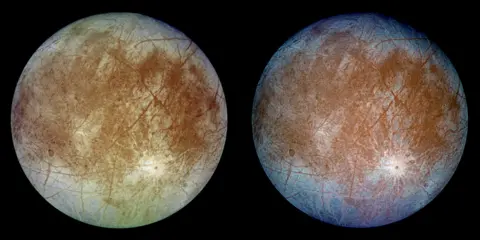
Space scientists are very cautious when talking about the chances of discovering life – there is no expectation that they will find human-like creatures or animals.
“We are searching for the potential for habitability and you need four things – liquid water, a heat source, and organic material. Finally those three ingredients need to be stable over a long enough period of time that something can happen,” explains Michelle Dougherty, professor of space physics at Imperial College in London.
And they hope that if they can understand the ice surface better, they will know where to land a craft on a future mission.
An international team of scientists with Nasa, the Jet Propulsion Lab and the Johns Hopkins Applied Physics Lab will oversee the odyssey.
At a time when there is a space launch virtually every week, this mission promises something different, suggests Professor Fox-Powell.
“There’s no profit being made. This is about exploration and curiosity, and pushing back the boundaries of our knowledge of our place in the universe,” he says.
[BBC]
-

 Foreign News4 days ago
Foreign News4 days agoOne of Ireland’s ‘most wanted’ facing extradition from Dubai
-

 Features4 days ago
Features4 days agoBrands … and brand names
-

 Business4 days ago
Business4 days agoJohn Keells Unveils its 687 room luxury hotel, Cinnamon Life at City of Dreams Sri Lanka
-

 News7 days ago
News7 days agoSri Lankan worker becomes millionaire doing cleaning jobs in Australia
-

 Editorial2 days ago
Editorial2 days agoGenie at large
-

 News5 days ago
News5 days agoNominations close, NPP and SJB reveal National List nominees
-

 News4 days ago
News4 days ago‘Cold case’ investigations into past crimes begin says police
-

 News4 days ago
News4 days agoLaunch of Journal and Distribution of Awards











